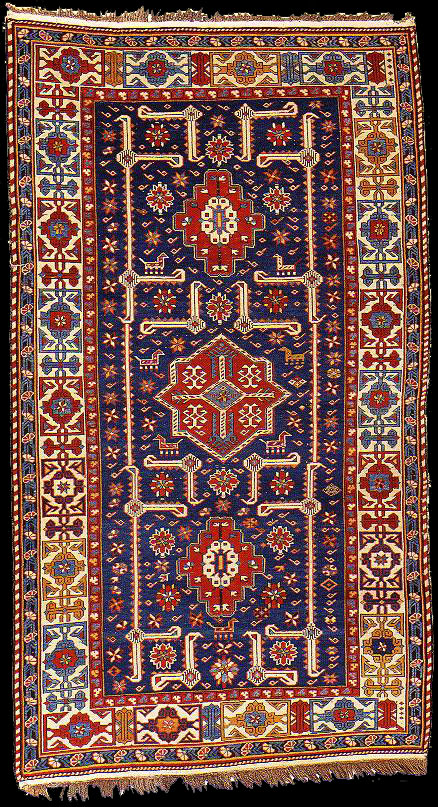|
Antique Khyzy rug
circa 1880
230 x 130 cm (7’7” x 4’3”)
symmetrically knotted wool pile on wool warps and cotton wefts
The highly geometric split-leaf arabesque forms that
decorate the field of this rug appear on the brocaded covers and bags of
the Shemakha district
(should be north of Shemakha - Khyzy Region (VD))
in northeast Caucasus, sometimes in conjunction with the octagonal
medallion that we see here at the centre, which is also typical of the
Akstafa typology of Shirvan rugs (see for example A.N. Landreau, W.R.
Pickering, From the Bosphorus to Samarkand Flat-Woven Rugs, Washington
1969, plate 20, pg. 36). The spaciously drawn, multi-coloured Kufic border
framing the composition is characteristic of the finest east Caucasian
weavings (see E. Herrmann, Kaukasische Teppichkunst Im 19. Jahrhundert,
Munich 1993, plate 32, pg. 48 for a sumakh woven horse cover from the
Shemakha district, dated 1876/77, with an identical Kufic border).
|

